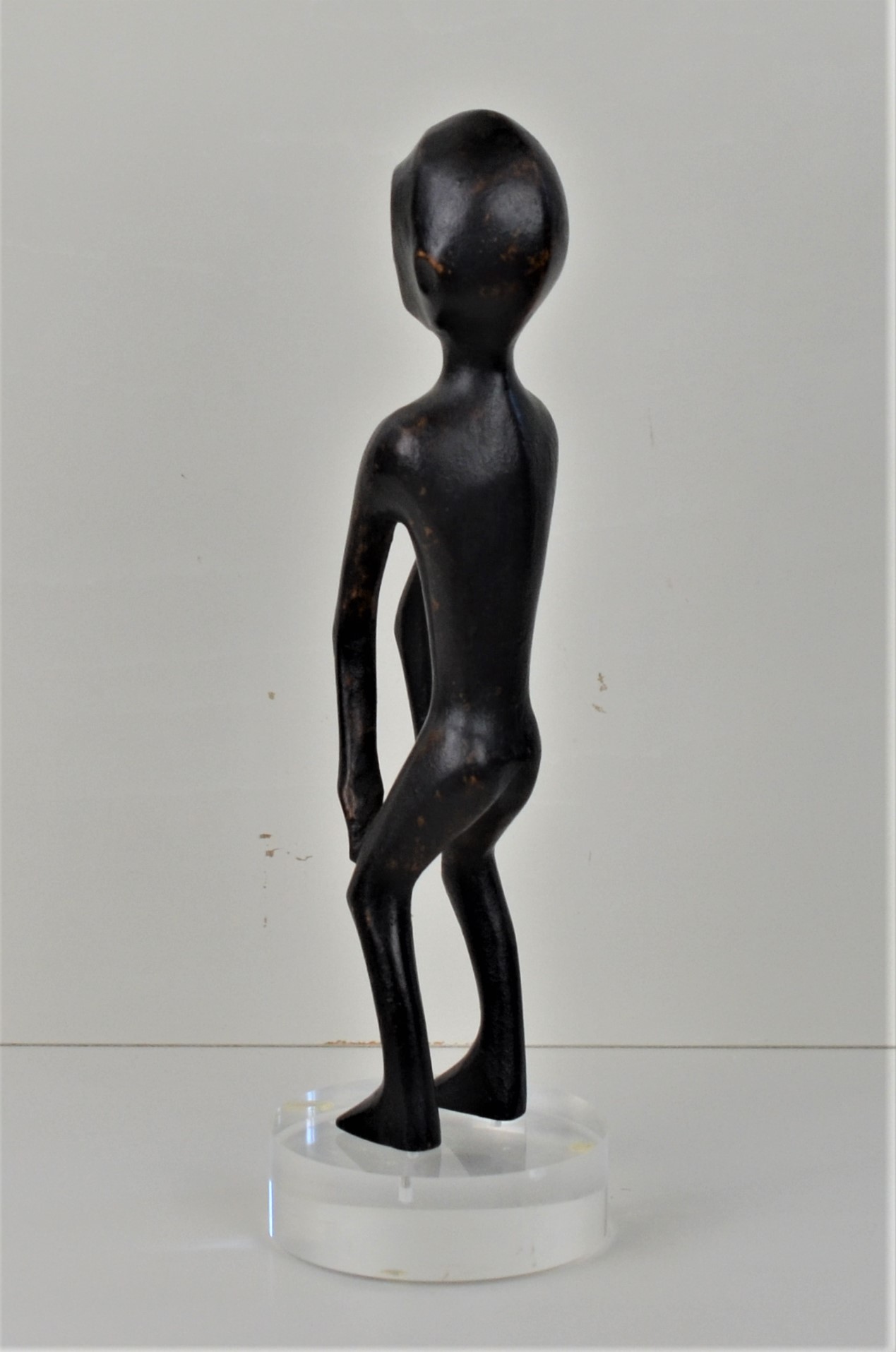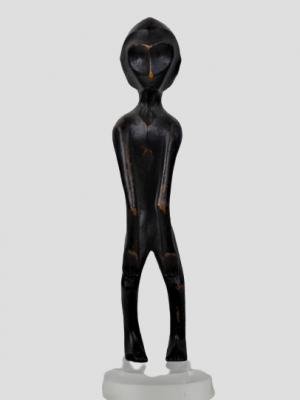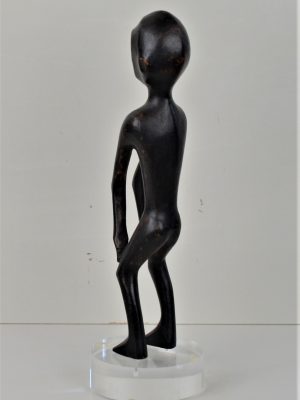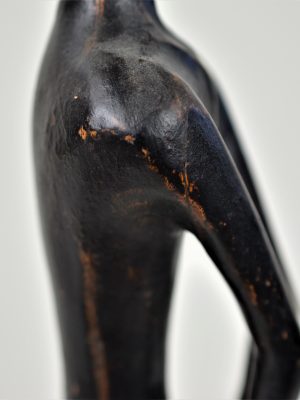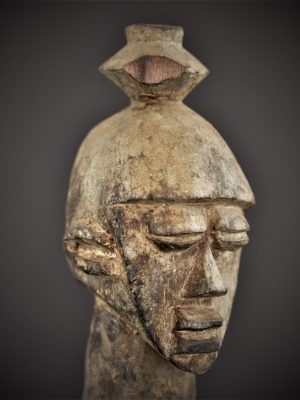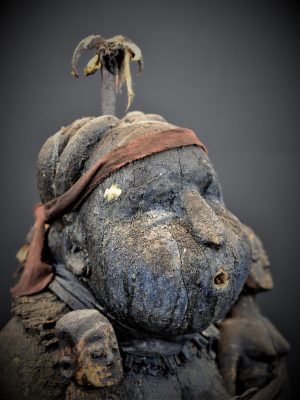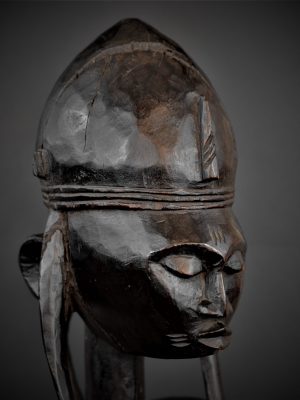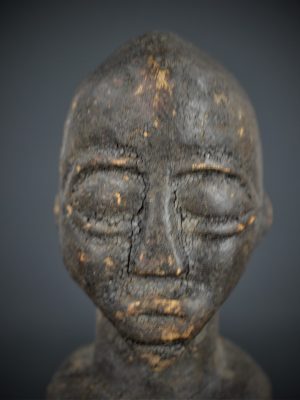Mbole Statue, Democratic Republic of the Congo
650€
Cette superbe statuette appartient au groupe rare et emblématique des statues ofika. Les genoux légèrement pliés et les bras repliés vers l’avant donnent au corps une posture mystérieuse et éthérée. Les petits yeux ronds et perçants à l’intérieur d’une face creusée « en cœur » dessinée par les lignes des arcades sourcilières se rejoignant à la naissance du nez fin et une petite bouche en losange, regardent vers l’avant avec une expression sereine mais animée. Magnifique patine noire brillante et couleur miel sur les parties saillantes.
The mysterious ofika statues were created for use within the Lilwa Association, a socio-religious system that performed educational, judicial, political, economic and ritual functions. Mbole statuary is generally stereotyped as representing "ritually executed persons" or "hanged criminals" (Mack in Phillips 1995: 306; Neyt 1981: 30; Sieber and Walker 1987: 99). For a better understanding of the statues ofika, the interpenetration of the rituals linked to the death of certain initiates of Lilwa is very useful: “at the death of a kanga [diviner], the corpse is suspended from a pole in his house and the liquids are collected before being buried in a termitaria ”and“ when a yeni [top lilwa initiate] is dying, he is isolated by his helpers in the forest and killed. Once the corpse is displayed in a giant tree, its successor is initiated ”(Biebuyck 1986: 242). Raised to the status of ancestors during these apotheosis rites, these initiates became the privileged intermediaries between the living and the invisible world.Ofikaeffigy of these ancestors endowed with supernatural powers, was kept away from the village, hidden in the forest and probably, as among the neighboring Yela, in a tree trunk or at the bottom of a rivercf. Volper in Falgayrettes-Leveau, Initiés. Bassin du Congo, 2013, p. 133). While our knowledge of its emblematic role within Lilwa remains incomplete, sources attest to its use during initiation into the first grade, in conflict resolution and when the balance of the village was weakened. The Ofika were then carried in procession through the village, in order to "ward off misfortunes" and to protect the group.
GO TO THE VIDEO GO TO THE CATALOG
Origin
Ex French collection
- Dimensions: H 25 cm
- Epoque: Première moitié du XXème siècle
- Ethnie: Mbole
- Matériaux: Bois
- Pays: R. D. du Congo





